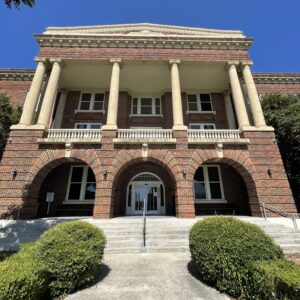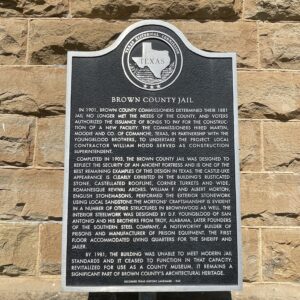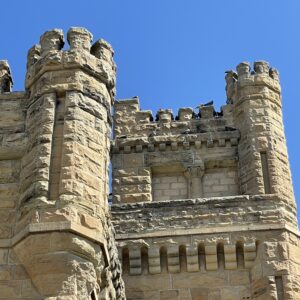Year Built: 1917
Architect: Henry T. Phelps
The Brown County Courthouse was built in Brownwood, Texas.
The county, formed in 1856, came from Comanche and Travis counties and organized in 1858. Brownwood is the county seat. Like many counties in Texas, Brown was named after its first postmaster, Wiley B. Brown, when it was awarded a post office in 1958.
In 1903, the county voted itself a dry county. Prohibition caused turmoil in the county. Brown remained a dry county until the late 1950s, when the sale of alcohol was made legal.
Historical Marker: In 1901, Brown County commissioners determined their 1881 jail no longer met the needs of the county, and voters authorized the issuance of bonds to pay for the construction of a new facility. The commissioners hired Martin, Moodie and Co. of Comanche, Texas, in partnership with the Youngblood Brothers, to undertake the project. Local contractor William Hood served as construction superintendent. Completed in 1903, the Brown County Jail was designed to reflect the security of an ancient fortress and is one of the best remaining examples of this design in Texas. The castle-like appearance is clearly exhibited in the building’s rusticated stone, castellated roofline, corner turrets and wide, Romanesque Revival arches. William F. and Albert Morton, English stonemasons, performed the exterior stonework using local sandstone. The Mortons’ craftsmanship is evident in a number of other structures in Brownwood as well. The interior steelwork was designed by D.F. Youngblood of San Antonio and his brothers from Troy, Alabama, later founders of the Southern Steel Company, a noteworthy builder of prisons and manufacturer of prison equipment. The first floor accommodated living quarters for the sheriff and jailer. By 1981, the building was unable to meet modern jail standards and it ceased to function in that capacity. Revitalized for use as a county museum, it remains a significant part of Brown County’s architectural heritage. Recorded Texas Historic Landmark – 1963

















